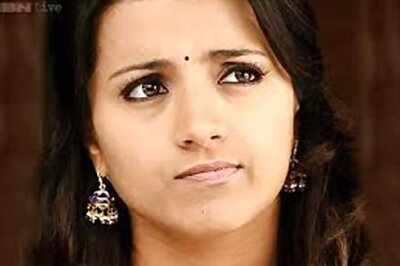
views
It’s Ganesh Chaturthi, Maharashtra’s most beloved festival. For obvious reasons, there isn’t the usual zeal, the frenzy, the vim and vigour, the thumping congregations and even the relentless cacophony of this 10-day celebration. Instead, families are meeting at home in smaller more intimate groups, everything is halcyon, more decorous and there is a sense of legitimate worship, unlike the usual one-upmanship, dazzle, and downright commercialism. Within my immediate environs as well I sense, some sense. And what makes most sense to me, is when good sense is accompanied by great food. And I have to admit, that the first few days of the festival have, for me, been a ‘modak’ fest. The food that is most synonymous with Lord Ganesha.
For those of you who do not live in Maharashtra, have never had the good fortune of tasting a ‘modak’, let me help you. First and foremost, you have to cold-shoulder if not downright scorn the ‘modaks’ that are available in most sweets shops. They are nothing more than barfi, or if at all, some form of flavoured ‘mawa’ pressed into a mould, which is designed like an over symmetrical coconut shaped ‘modak’. So then what is a real ‘modak’? It is in fact is a dumpling. You can have this dumpling either steamed or fried.
If you are making a steamed ‘modak’, then the dumpling is made of rice flour, and if they are being fried then the outer shell is made with wheat flour. The stuffing, however, remains the same. Freshly grated coconut, slowly cooked with jaggery, cardamom, nutmeg, raisins and broken cashew. I like the steamed one the most. When had straight out of the steamer, they are soft and squishy. When you bite into the fine outer coating, the inside coconut stuffing should just ooze out. These steamed ‘modaks’ are also known as ‘Ukadiche Modak’ in Marathi.
But what is the story behind the ‘modak’? Like Lord Krishna’s infatuation with butter, what is behind Lord Ganesha’s obsession with ‘modaks’? There is a sort of parable. My grandmother would tell these stories and only she knew if they were true. But because I don’t want to call her a liar, I’ll just say that she too probably heard it from her mother or her grandmother. So here goes “The Modak story”.
A famished Lord Shiva turned up with his wife Goddess Parvati and their son, little Ganesha, at the home of Atri Rishi and his wife Anusuya demanding food. Anusuya seeing the rotund and adorable Ganesha told Lord Shiva that she would feed him only after she had finished feeding Little Ganesha. Though irritated, Lord Shiva relented as Anusuya went ahead and served Ganesha. Little Ganesha, however, was impossible to satiate and would not stop eating, and Anusuya could not stop feeding him. She soon realised that Lord Shiva was by now hungry, enraged and exasperated. Not wanting to incur Shiva’s wrath and to find a way to sate Ganpati’s ceaseless hunger she finally served him one single piece of sweet.
As soon as he ate that, he gave out a big satisfied burp, at which point Lord Shiva too burped 21 times. Goddess Parvati, like any other mother with a perennially hungry child, wanted to know what single piece of food could fill her son’s stomach instantly and mollify him. It was a ‘modak’. That’s is why devotees offer ‘modaks’ to Lord Ganesha because they make him very happy and satisfy him immediately. The word ‘modak’ itself has many auspicious associations. ‘Moda’ means bliss and ‘ka’ means a small part. So, ‘modak’ is a small part of bliss. In most depictions of Ganesha, he holds a ‘modak’ in his hand, which symbolises not only his perpetual love for food, but also the beholder of bliss. Interesting right?
Most parts of the country and world who worship Ganesha, make a version of the ‘modak’, which is known as ‘modakam’ or ‘kudumu’ in Telugu, ‘kadubu’ in Kannada, ‘kozhakatta’ in Malayalam and ‘kozhukattai’ in Tamil.
Even in Japan where they worship Kangiten, a deity depicted as two male and female human figures with the heads of elephants clothed in long robes and standing either back to back or embracing is believed to be derived from Ganpati. Kangiten in Japan is also known as Binayaka Ganabachi (see the similarity) and is offered a sweet a similar to ‘modak’ locally known as Kangidan. Kangidans are made of flour and filled with a stuffing of curd, honey, and red bean paste. Once wrapped in a shape similar to the ‘modak’, the Kangidans are deep fried until golden. It is actually called a “Bliss Bun”.
So here we are. What does the ‘modak’ teach us? It teaches us that Lord Ganesha is not only the Lord of all bliss but also the greatest foodie in our pantheon of Gods.
(The views expressed in this article are those of the author and do not represent the stand of this publication.)
Read all minute-by-minute news updates for Uttar Pradesh election results 2022, Punjab election results 2022, Uttarakhand election results 2022, Manipur election results 2022, and Goa election results 2022.
Click here for seat-wise LIVE result updates.

















Comments
0 comment